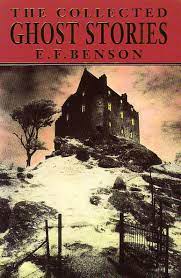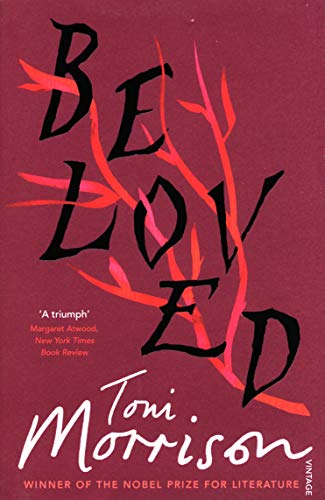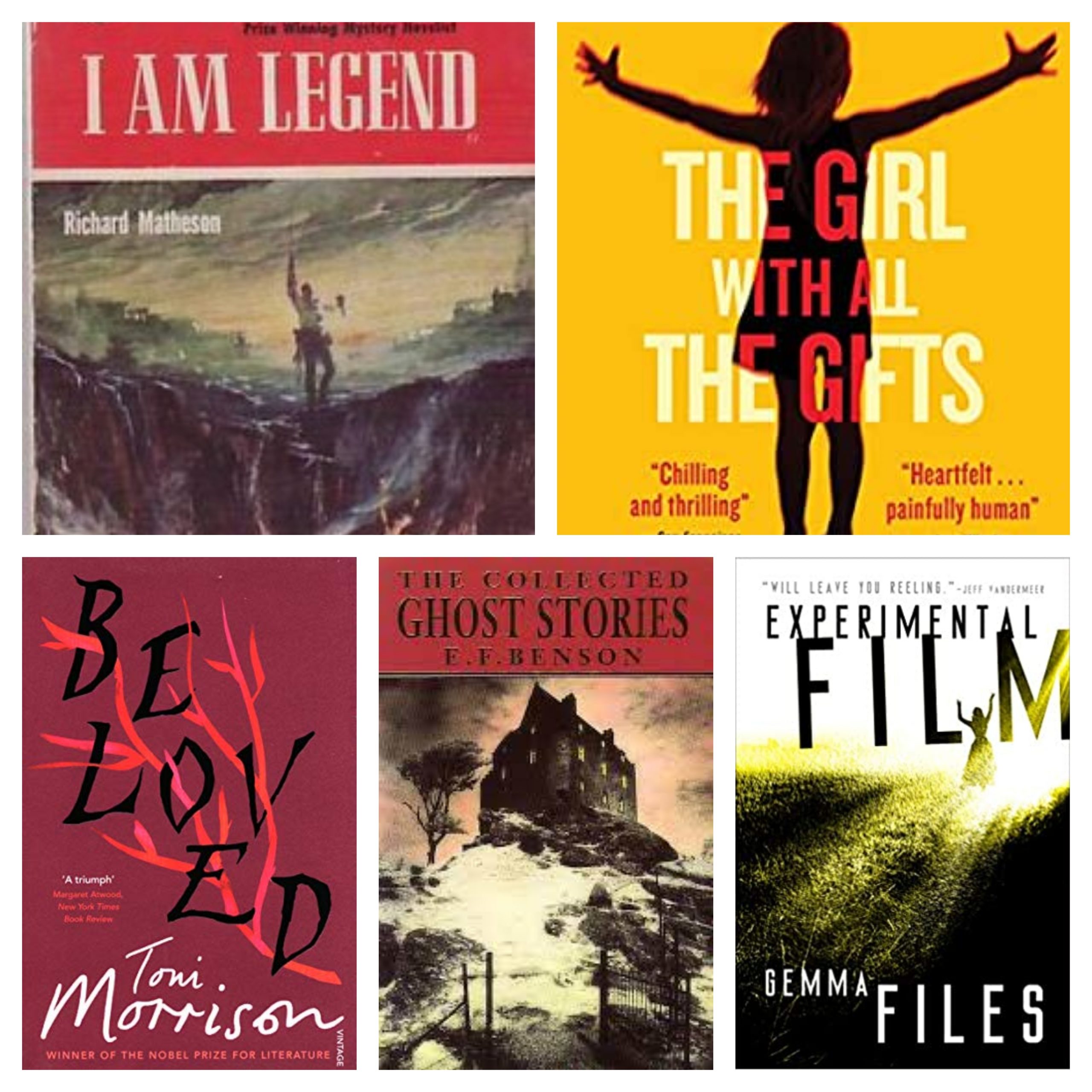As I near completing a third of the big list of horror books I’ve committed to reading, I thought I’d reflect a little on why I’m doing this. There are a few reasons actually. First and foremost, I genuinely LOVE horror fiction, whether it be books, films or TV series. The thing is, horror rarely if ever scares me. So why do I like consuming media intended to elicit terror in the average person? That’s a conversation between me and my imaginary therapist. Second is that I tend to get OCD about completing lists. So when confronted with such a mammoth undertaking as reading roughly 250 books in a beloved genre, my fixated brain latched on like nobody’s business. An even bigger challenge will be whether I will actually stay focused enough to finish this damn thing.
In this installment, we’ve got an alternative take on the zombie, a stone-cold classic of the last man on earth besieged by vampires, a deep dive into the Canadian film industry for some reason, a tome of ghost stories involving staunch bachelors witnessing unseen terrors and a Pulitzer prize-winning, haunted story of the ghosts of slavery.
Also for those just joining me, this is my journey through the following “Best of” Horror lists:
Reedsy Discovery Best Horror Books
Stephen Jones & Kim Newman’s Horror: 100 Best Books
Stephen Jones & Kim Newman Horror: Another 100 Books
If you want to check out my previous entries, they can be found here:
Part 9 | Part 8 | Part 7 | Part 6 |Part 5 | Part 4 | Part 3 | Part 2 | Part 1
Ok, that’s enough hemmin’ and a hawin’. Let’s dive into this slate of books.

The Girl with All the Gifts (Mike R. Carey, 2014)
List: NPR
From the writer of such lauded comics as Lucifer and Hellbazer comes this post-apocalyptic zombie tale that does something most zombie stories don’t: make you actually care about the characters, even some of the ones who out of the gate seem incredibly unlikable. It posits a future where much of humanity has been taken over by a deadly spore virus, rendering them mindless zombies, that is, with the exception of humans at military outposts studying the infected and roving survivalists, called junkers, who seem to take a very nihilistic view of things. What makes this book somewhat unique though is the third kind of creature, children who have been infected with the spores but are still able to maintain coherent thought (unless they catch a whiff of the overt human smell). The story follows one of these “gifted” children, named Melanie, as she travels with a teacher she idolized from the compound she was imprisoned in along with a hard-nosed sergeant, a rookie private and a sociopathic researcher who wants to slice ‘n’ dice Melanie’s brain at the earliest convenience.
Some may be familiar with this story via its film adaptation. Interestingly, this holds the fairly unique distinction of being written concurrently with the screenplay to the film, also written by Carey. As far as plot points go, they stick pretty close to another aside from the ending but the book gets a leg up by doing a better job at nuanced characterization, jumping back and forth between the points of view of each of the five characters on the move and fleshing them out much more than the film version does. The book also goes into a lot more detail on the science of what happened for those interested in that aspect of it. Overall, this was a solid read that’s recommended for fans of post-nuke and zombie fiction as well as those looking for a more character-driven survival narrative.

I Am Legend (Richard Matheson, 1954)
Lists: NPR, Reedsy Discovery and Jones/Newman
I don’t know why it has taken me so long to get around to reading this one. I’m generally quite a fan of Matheson’s short stories but for whatever reason haven’t actually read any of his novels. I felt it was about damn time to get into this highly influential sci-fi/horror story of a dying world and the one man left trying to make sense of it. While the film versions tend to latch on to the aspects of the story emphasizing the lead character’s isolation and survival in the wake of a deadly virus that has killed or mutated most of the world’s population. What hasn’t really been emphasized much at all but which is a central part of this mostly interior narrative is that it also serves as a deconstruction of the vampire myth. Matheson systematically takes each of the hoary old tropes of the vampire story introduced over the years and provides logical well-argued reasoning for why they exist. From the source of the vampires themselves and why they crave blood and cannot be harmed by regular guns to why they die in sunlight, are repelled by garlic and can be killed with wooden stakes to the chest. Oddly the first adaptation of this book, The Last Man on Earth with Vincent Price, hews the most closely to the source material (which isn’t surprising given the screenplay was co-written by Matheson himself). But even that version makes some curious choices like casting Vincent Price in the lead. As much as I love Price, he just wasn’t a good fit for that role. It also changes the ending and has an overall cheap look and feel that just doesn’t do justice to the possibilities of what a proper adaptation of I Am Legend could look like. Don’t even get me started on The Omega Man or Will Smith’s shenanigans.
To cut to the chase, this is an excellent novel with a great pacing and a spare but compelling prose style that makes reading this one an absolute joy. Highly recommended if you are like me and have slept on one of the greats of horror literature.

Experimental Film (Gemma Files, 2015)
List: NPR
Folk horror is baked in celluloid in this surprisingly detailed dive into the world of Canadian filmmaking. Our narrator discovers what seems to be clips made by the first Canadian female filmmaker, ethereal experimental footage of a towering goddess made real, buried in a hack ripoff artist’s latest short film. This leads her down a path into the historical of Canadian film and the pagan beliefs that spurned it on.
I appreciated this one, if for nothing else, for its many allusions to filmmaking and film history, and it’s particularly enlightening on the Canadian film industry and how it generally functions oddly enough. As a horror novel, it certainly has moments of great interest with the mystery of Mrs. Whitcomb, the early filmmaker of the strange unearthed short films, her back story, why she made the films and what is being depicted in them. What I wasn’t too keen on was the style in which the story is told, mostly in a massive series of exposition dumps that the narrator even apologizes for up front. It more often than not violates the ‘show not tell’ axiom of compelling narrative by rather than describing the bizarre events as they occur, she essentially recounts what happened based on post-event testimony via other witnesses or footage recorded. It just made the book feel longer than it should be. Overall it was still pretty decent and interesting at times but seems like it could’ve been told more efficiently.

The Collected Ghost Stories (E. F. Benson, 1895-1934)
List: Jones/Newman
**Note: This book actually includes all of the stories found in Benson’s The Horror Horn, the book in the Jones & New Best 100 Horror list, plus about 400 more pages worth.
E. F. Benson is often over-shadowed by the more celebrated British master of ghost stories M.R.James (who I’ll be exploring in more detail later) and while not every story in this mammoth collection is great, Benson is an obviously talented writer who can conjure up some truly creepy imagery. Many of Benson’s stories involve staunch “bachelors” being regaled with tales of terror in an upcountry estate, men’s club or some other austere meeting place before said narrator experiencing the supernatural thing itself. Quite a few of the stories here fall into this bucket, giving the collection a little bit of a same-y feel at times. Although that makes the more unique stories stand out even more. In addition to the more typical ghost stories (of which his most well-known may be “The Bus Conductor” which was filmed as part of the classic British horror anthology Dead of Night), he has tackled stories of vampires like “Mrs. Amworth” and the often collected “The Room in the Tower” which also features another reoccurring preoccupation of his, that of premonitions. In fact, in a handful of stories like “In the Tube”, “Bagnell Terrace” and “Corstophine” he has broken down premonitions in a sort of crude form of string theory, explaining them as a way of viewing time in a non-linear fashion. He also occasionally took a more light-hearted or comedic approach to the supernatural in stories like “The Psychical Mallards”, “Mr. Tilly’s Séance” and “Spinach”. And actually one of the best stories in this collection “Pirates” combines the light-hearted fun of some of these with that skewed perception of time mentioned previously to create a wistful piece of nostalgia that feels like a precursor to some of the stories of Ray Bradbury and Twilight zone episodes like “Kick the Can”. One thing I appreciated about Benson was that while he did indeed come across as stuffy at times, he also wasn’t afraid to get grisly or gross occasionally as in stories like “Caterpillars” and “The Sanctuary”, another two of the of the better stories here. Overall this collection is packed full of decent to great stories but I would suggest reading them over a long period of time to avoid them feeling too repetitive at times.

Beloved (Toni Morrison, 1987)
Lists: NPR & Reedsy Discovery
Previous to Beloved, I had only read one Toni Morrison novel, Jazz. That book was a lyrically twisting historical slice-of-life narrative written to mimic the free flowing nature of jazz itself. Beloved has that same lyical quality but in service of a much darker, more grim story. The words tumble and confuse as the narrative shifts between past and present. Sethe is a woman with a tortured history, living as a slave in the South and in the reconstruction era has now settled into her mother-in-law’s old place, haunted by the ghost of Sethe’s infant. When Paul D., a more figurative ghost from the past shows up and starts to insinuate himself into the household while a mysterious young lady shows up one day knowing personal things about Sethe that she shouldn’t, it kickstarts a sequence of events that leads to Sethe’s unraveling, forced to confront the demons of her past. At times Beloved it certainly a powerful book and while it does contain ghosts, the real horrors are of the more depraved human kind in depicting the kind of lives slaves were forced to live in, lives filled with savage beatings, rape and other examples of rampant mistreatment. When it does finally show all its cards and reveal what really happened in Sethe’s past, it isn’t unfathomable to see what brought her to that point. Having said that, I will say that this was not an easy book to read. Filled to the brim with local dialects both in dialogue and interstitial narrative as well as parts of the novel structured almost as loose verse poetry at times, I found myself reading and re-reading certain passages to ensure I grasped the full meaning of what was being described. While this does add to the authenticity in feel, it also serves to hamper the actual forward thrust of the narrative to an extent. Yes, this won the Pulitzer Prize for literature and is across the board critically acclaimed. But do I think it’s a perfect book? No. Despite that, I can certainly see why it is so… beloved (heh…couldn’t resist).

